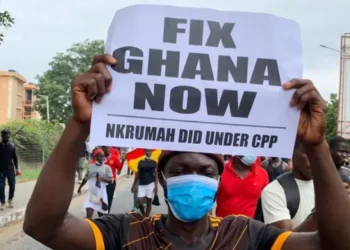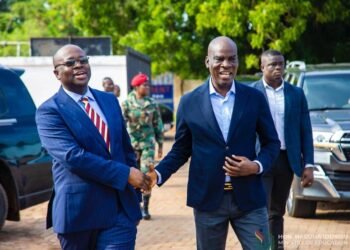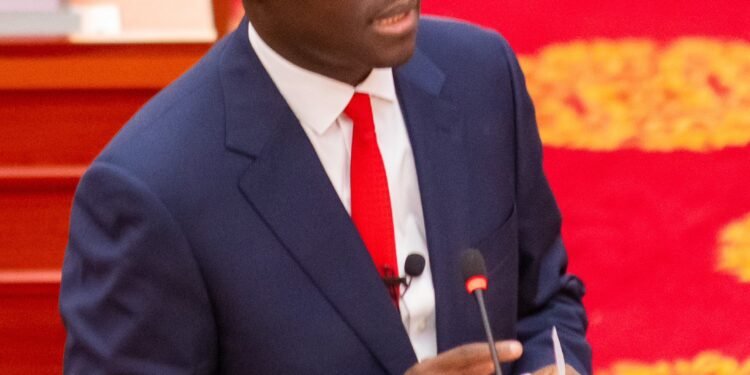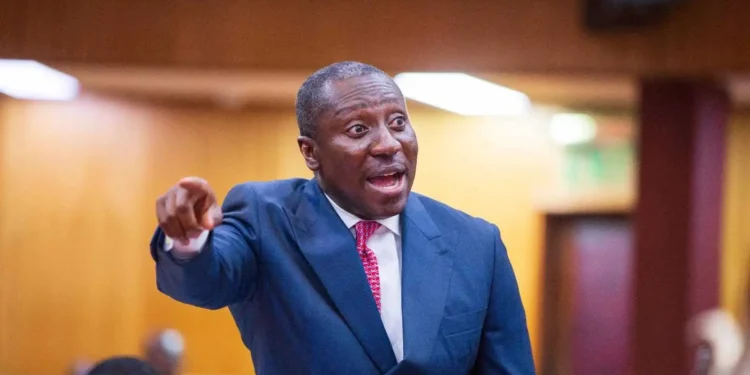In his seminal work, “Ghana: The Road to Independence, 1919-1957,” F. M. Bourret provided a meticulous chronicle of Ghana’s tumultuous path toward self-governance.
The excerpts from Chapter 10 (pages 162-202) encapsulate a period marked by significant constitutional developments, political upheavals, and the relentless pursuit of autonomy.
Bourret’s analysis highlighted key events and figures that shaped the country’s destiny, with particular emphasis on the pivotal 1946 Burns Constitution and its aftermath.
On page 162, Bourret asserted, “Of all the steps taken towards the goal of political autonomy during this period, the most notable was the 1946 [Burns] Constitution.”
This constitution was revolutionary in providing a clear African majority on the legislative council and establishing a legislative union between the Colony and Ashanti.
However, despite its progressive intentions, the Burns Constitution quickly became a source of contention and eventual failure.
The Ashanti region, a significant and influential part of Ghana, had long preferred a federal state or republic since the 1940s. Sir Frederick Bourne’s 1955 report advised against federation, deeming it unsuitable for such a small country, and instead recommended a dilution of power to regional assemblies.
The aspirations of Ashanti for a federal system clashed with the centralizing tendencies of the Burns Constitution, leading to dissatisfaction and unrest.
Barely a year after the Burns Constitution’s inauguration, political dissatisfaction simmered. In August 1947, the United Gold Coast Convention (UGCC) was established by members of the upper middle class, predominantly lawyers and merchants like Mr. George Grant and Dr. Danquah.
Bourret noted that the UGCC’s elite members desired self-government at the “earliest opportunity” and assumed they would maintain their leadership as the country progressed towards independence.
This assumption was upended with the arrival of Dr. Kwame Nkrumah as the UGCC’s secretary in December 1947.
Nkrumah’s radical approach contrasted sharply with the UGCC’s moderate stance, and his influence began to shift the political landscape. Late in 1947, an Accra subchief, Nii Bonne, initiated a boycott campaign to reduce prices, culminating in the violent February 1948 riots, where ex-servicemen clashed with colonial authorities, resulting in fatalities.
Steps Toward Greater Autonomy
The 1948 Watson Report, produced in the wake of the riots, recommended increased autonomy for the Gold Coast. In January 1949, the government formed an all-African committee chaired by Sir Henley Coussey, which included chiefs and representatives from various regions, though it notably excluded Nkrumah.
This committee aimed to engage moderates and avoid the more radical elements of the independence movement.
The October 1949 Coussey Report laid the groundwork for the 1951 Constitution. While moderates welcomed this report, radicals, particularly those associated with Nkrumah, criticized it.
“The Accra Evening News, Nkrumah’s paper, lambasted the Coussey Report, as Nkrumah sought full independence rather than the semi-autonomy favored by the UGCC elites.”
F. M. Bourret
The UGCC elites felt betrayed by Nkrumah, who, according to Bourret, used his position to cultivate a personal following. This schism led to the formation of the National Liberation Movement (NLM) in Ashanti in September 1954, driven by discontent over cocoa prices and broader political issues.
Violent clashes between members of Nkrumah’s Convention People’s Party (CPP) and the NLM marked the period leading up to the crucial 1956 general election.
The election, held on July 12 and 17, 1956, was pivotal. It demonstrated significant support for Nkrumah’s independence proposals, convincing the British government to grant full independence. The final draft of the 1957 constitution, which maintained a unitary state, was signed by Queen Elizabeth II on February 2, 1957.
Nkrumah’s Legacy and the Unitary State
Bourret’s narrative underscores Nkrumah’s central role in shaping modern Ghana. Despite opposition from groups favoring a federal state or semi-autonomy, Nkrumah’s relentless pursuit of full independence and a unitary state prevailed.
The Ghana Congress Party (GCP), the successor to the UGCC, advocated for semi-autonomy, but Nkrumah’s vision for a united republic ultimately defined the nation’s path.
Reflecting on this historical journey, one must acknowledge the complexities and divergent aspirations that characterized Ghana’s road to independence.
“The Ghana we know today would not have existed but for Nkrumah’s constant agitation for full independence and a unitary state.”
F. M. Bourret
This observation invites continued debate on the merits of unitary versus federal systems while underscoring the importance of staying true to historical records.
READ ALSO: Patel Criticizes Farage’s Riot Comparisons






















